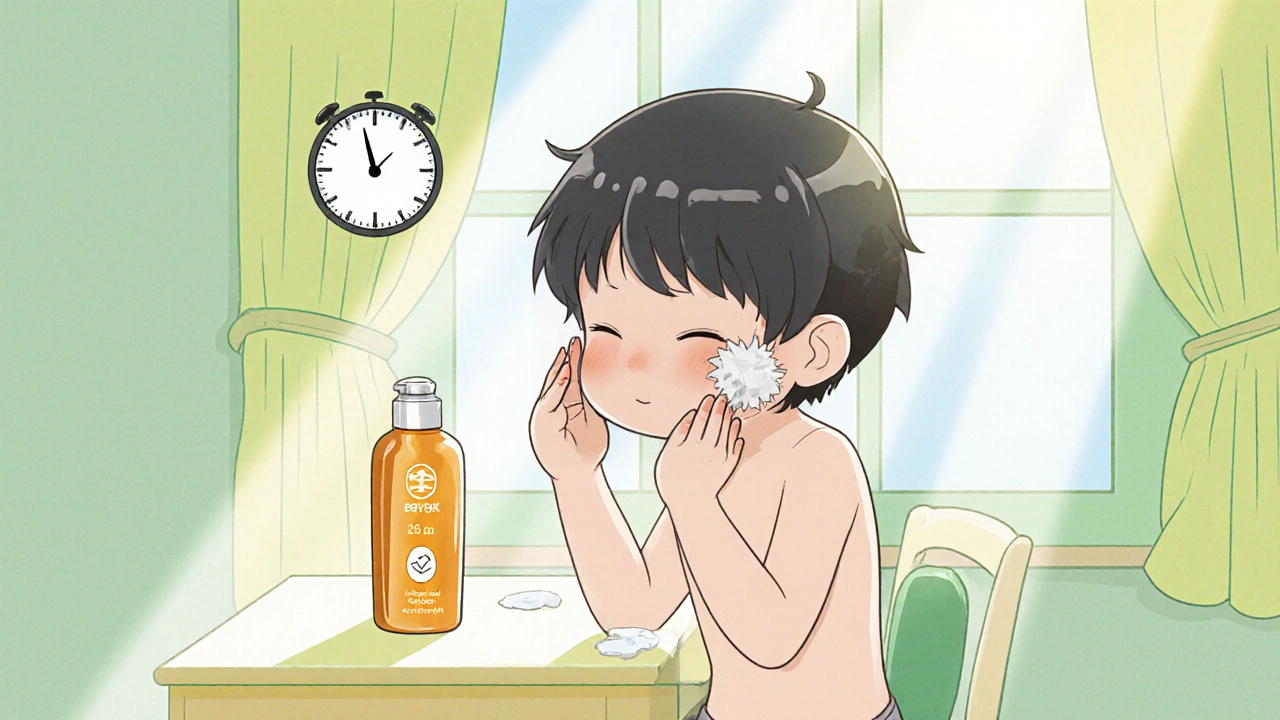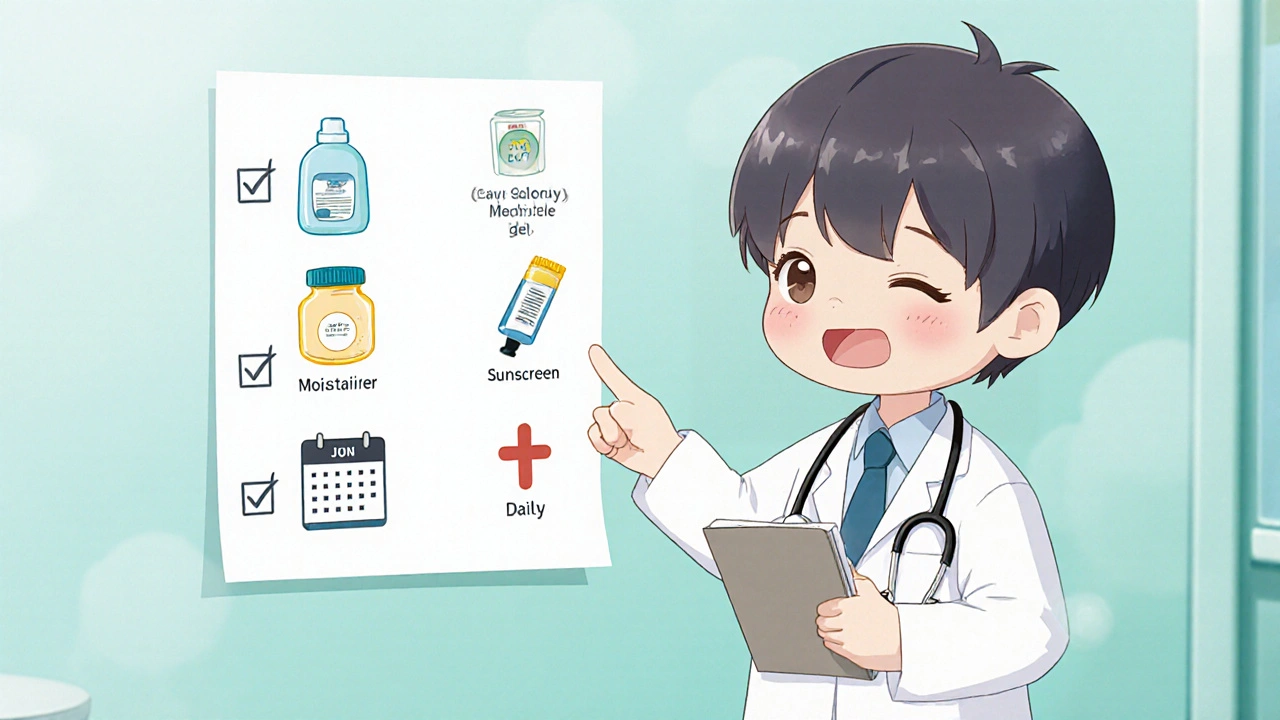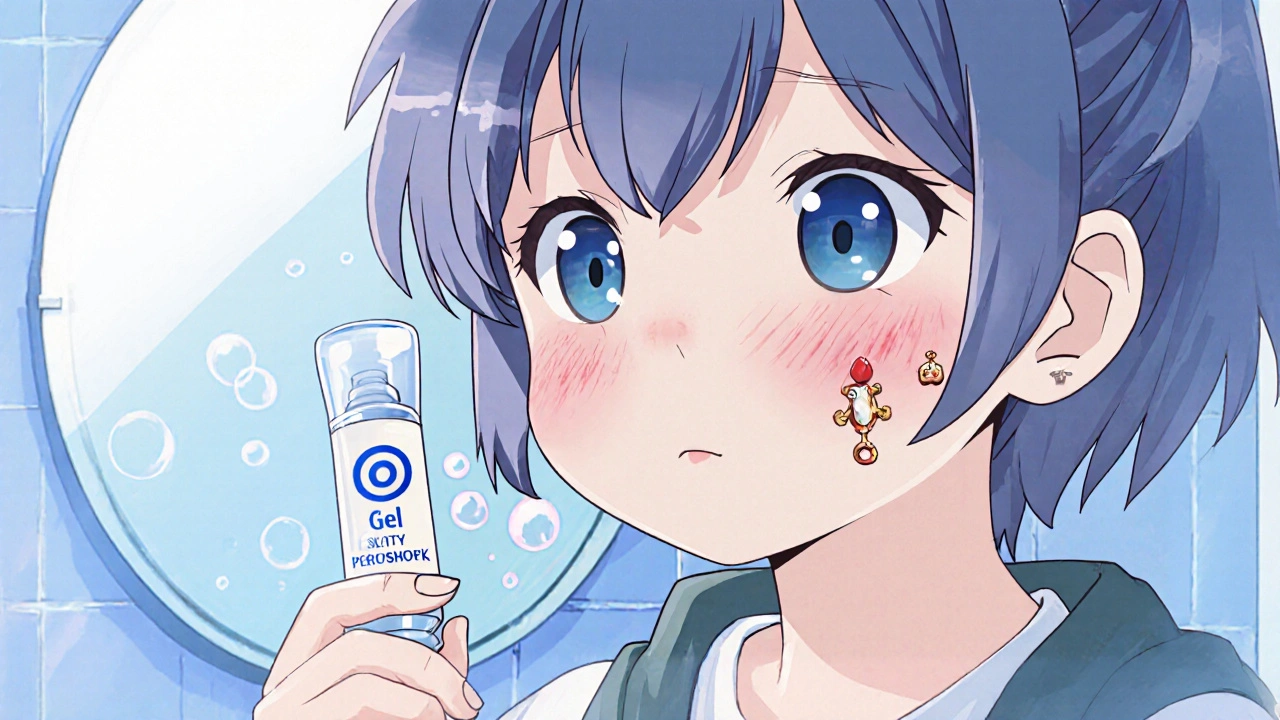Benzoyl Peroxide Side Effects: What You Need to Know
17 Oct, 2025Benzoyl Peroxide Side Effect Risk Calculator
Personalized Benzoyl Peroxide Guide
Ever wondered why a powerful acne fighter sometimes leaves you with red patches or peeling skin? benzoyl peroxide side effects are a common worry for anyone trying to clear breakouts without ruining their complexion. This guide breaks down what actually happens on your skin, why it varies from person to person, and how to keep the benefits while ditching the drawbacks.
What Is Benzoyl Peroxide?
Benzoyl Peroxide is a synthetic, oil‑soluble compound that releases oxygen to kill acne‑causing bacteria and reduces excess oil production. First introduced in the 1960s, it quickly became a staple in over‑the‑counter acne gels, creams, and washes because it works on multiple fronts: antibacterial, keratolytic, and anti‑inflammatory.
How Benzoyl Peroxide Works on Acne
- Oxygen burst: It introduces oxygen deep into pores, creating an environment where Cutibacterium acnes (formerly Propionibacterium acnes) can’t thrive.
- Keratolysis: It loosens the bonds between dead skin cells, helping to prevent clogged pores.
- Oil control: By slightly drying the surface, it reduces the amount of sebum that fuels breakouts.
The triple action is why dermatologists often recommend it as a first‑line, especially for mild to moderate acne. But the same mechanisms that clear pimples can also irritate healthy skin.
Common Side Effects You Might Notice
Side effects vary with concentration (usually 2.5%, 5%, or 10%) and how often you apply the product. Here’s what most users report:
- Redness and Burning: A tingling sensation that can turn into visible redness, especially during the first week.
- Dryness and Peeling: The skin may feel tight, flaky, or develop small “paper‑thin” scales.
- Itching: A mild to moderate itch often accompanies dryness.
- Hyperpigmentation: In darker skin tones, inflammation can leave temporary dark spots.
- Photosensitivity: Your skin can become more sensitive to UV rays, increasing the risk of sunburn.
Most of these reactions are mild and subside as your skin builds tolerance, but they can be uncomfortable enough to make you abandon treatment.

Why Some People Experience More Irritation
Understanding the factors that influence side effects helps you tailor your routine.
- Concentration: Higher percentages deliver stronger antibacterial action but also raise irritation risk.
- Skin Type: Sensitive, dry, or eczema‑prone skin reacts more readily than oily, thicker skin.
- Application Frequency: Using a product twice daily can double the chance of burning compared to once‑daily use.
- Other Active Ingredients: Mixing benzoyl peroxide with retinoids, salicylic acid, or strong exfoliants can overload the skin.
- Environmental Factors: Cold, windy weather or low humidity intensify dryness.
Tips to Manage and Minimize Side Effects
Don’t throw the product away before giving it a chance. Try these practical steps:
- Start Low and Slow: Begin with a 2.5% formula applied every other night. Gradually increase to daily use as tolerated.
- Patch Test First: Apply a pea‑sized amount on the jawline for 24hours. If no reaction, extend to larger areas.
- Moisturize After Application: Use a non‑comedogenic moisturizer (e.g., ceramide‑rich creams) once the benzoyl peroxide fully absorbs (about 10‑15minutes).
- Layer Correctly: Apply benzoyl peroxide on clean, dry skin before serums or sunscreen. Avoid sandwiched layering with other strong actives.
- Sun Protection: Choose a broad‑spectrum SPF30+ sunscreen daily. UV exposure worsens redness and can lead to post‑inflammatory hyperpigmentation.
- Limit Other Exfoliants: If you’re using a chemical exfoliant (AHA/BHA), reduce frequency to prevent cumulative irritation.
These habits often turn a harsh‑feeling regimen into a manageable one, letting you reap the acne‑clearing benefits.
When to Call a Dermatologist
If you notice any of the following, it’s time to seek professional advice:
- Severe blistering or intense burning that doesn’t improve after a week.
- Widespread swelling or hives, indicating an allergic reaction.
- Persistent hyperpigmentation that darkens despite sun protection.
- Acne worsening rather than improving after two weeks of consistent use.
A dermatologist can adjust the concentration, prescribe a combination therapy, or suggest alternative treatments like topical antibiotics or oral isotretinoin.

How Benzoyl Peroxide Stacks Up Against Other Acne Options
| Active Ingredient | Typical Concentration | Primary Benefits | Common Irritation | Best For |
|---|---|---|---|---|
| Benzoyl Peroxide | 2.5%-10% | Antibacterial, reduces oil | Redness, dryness, photosensitivity | Inflammatory acne, oily skin |
| Salicylic Acid | 0.5%-2% | Keratolytic, unclogs pores | Mild peeling, tingling | Blackheads, whiteheads, sensitive skin |
| Retinoids (e.g., adapalene) | 0.1%-0.3% | Cell turnover, anti‑inflammatory | Dryness, irritation, photosensitivity | Comedonal acne, post‑acne scarring |
| Topical Antibiotics (e.g., clindamycin) | 1%-2% | Reduces bacterial load | Rare irritation, possible resistance | Inflammatory lesions, in combo therapy |
The table shows that while benzoyl peroxide isn’t the gentlest option, it remains one of the most effective for quickly reducing inflammatory lesions. Pairing it with a milder agent like salicylic acid can balance efficacy and tolerability.
Quick Checklist Before You Start
- Choose the lowest effective concentration.
- Patch test on a discreet area.
- Apply to clean, dry skin.
- Follow with a non‑comedogenic moisturizer.
- Never skip sunscreen.
- Monitor for severe irritation and seek professional help if needed.
Keep this list handy; it’s a simple roadmap to safe, effective acne treatment.
Frequently Asked Questions
Can I use benzoyl peroxide on my whole face?
Yes, but start with small spots and gradually expand. For oily zones like the forehead or chin, a thin layer works best. Avoid the eye area and lips.
How long does it take to see results?
Most people notice a reduction in active pimples within 3‑5 days, but significant improvement typically appears after 2‑4 weeks of consistent use.
Is benzoyl peroxide safe during pregnancy?
Studies show it’s low‑risk, but many doctors recommend sticking to the lowest concentration and consulting your OB‑GYN before starting any new acne medication.
Can I combine benzoyl peroxide with retinoids?
Yes, but alternate nights or use the retinoid in the evening and benzoyl peroxide in the morning to reduce cumulative irritation.
Why does my skin feel tight after applying benzoyl peroxide?
The compound strips excess oil, leading to temporary dehydration. Applying a moisturizer within 15 minutes restores barrier function and eases that tight feeling.

alex montana
October 17, 2025 AT 20:52Benzoyl peroxide is a beast!!! It burns, it peels, it makes you feel like your face is on fire!!! But hey, it's the only thing that can actually clear those stubborn zits!!!
Grace Hada
October 21, 2025 AT 04:16Your skin is a battleground; surrender to irritation is cowardice.
Fabian Märkl
October 24, 2025 AT 11:39Start slow, stay consistent, watch those pimples fade 🌟💪!
Avril Harrison
October 27, 2025 AT 18:02Honestly, I've tried the 2.5% for a month and the dryness was barely there, just remember to moisturize.
Natala Storczyk
October 31, 2025 AT 01:25Do NOT let that oily skin monster win!!! Fight with the lowest concentration!!! Your cheeks deserve peace!!!
nitish sharma
November 3, 2025 AT 08:48It is advisable to commence treatment with a modest concentration, allowing the epidermis to acclimate whilst maintaining optimal barrier function.
Rohit Sridhar
November 6, 2025 AT 16:11When you start a benzoyl peroxide regimen, patience is your best ally. Begin with a 2.5% formula applied every other night, and observe how your skin reacts. If you notice only mild tingling, you can gradually increase the frequency to once daily. Should redness appear, step back and give your skin a day off before resuming.
Moisturizing is non‑negotiable; a light, non‑comedogenic cream restores the lipid barrier and soothes tightness. Apply the moisturizer after the peroxide has fully absorbed, typically ten to fifteen minutes.
Sun protection cannot be overstated-use a broad‑spectrum SPF30+ daily because benzoyl peroxide heightens photosensitivity. This also helps prevent post‑inflammatory hyperpigmentation, especially in darker skin tones.
Avoid layering other strong actives like retinoids or salicylic acid in the same routine; alternate nights if you wish to combine them. This reduces cumulative irritation while still delivering benefits.
Listen to your skin: if burning persists beyond a week or you develop blistering, seek professional advice promptly.
Remember, each individual's tolerance curve is unique, so adjust the regimen based on personal feedback rather than generic timelines.
Sarah Hanson
November 9, 2025 AT 23:34Please ensure you apply a non‑comedogenic moisturizr after the treatment to prevent transepidermal water loss.
Nhasala Joshi
November 13, 2025 AT 06:57Did you know big pharma hides the real side‑effects? 🌐🔬 The red patches are just a test for micro‑chips!!!
kendra mukhia
November 16, 2025 AT 14:20Seriously, if you can't handle a little tingling, you shouldn't be on Reddit giving advice.
Bethany Torkelson
November 19, 2025 AT 21:43Stop whining about dryness; it's a sign the product works, deal with it.
Wyatt Schwindt
November 23, 2025 AT 05:06The key is consistency.
Lyle Mills
November 26, 2025 AT 12:29Hydration buffer restores barrier function post‑peroxide exposure.